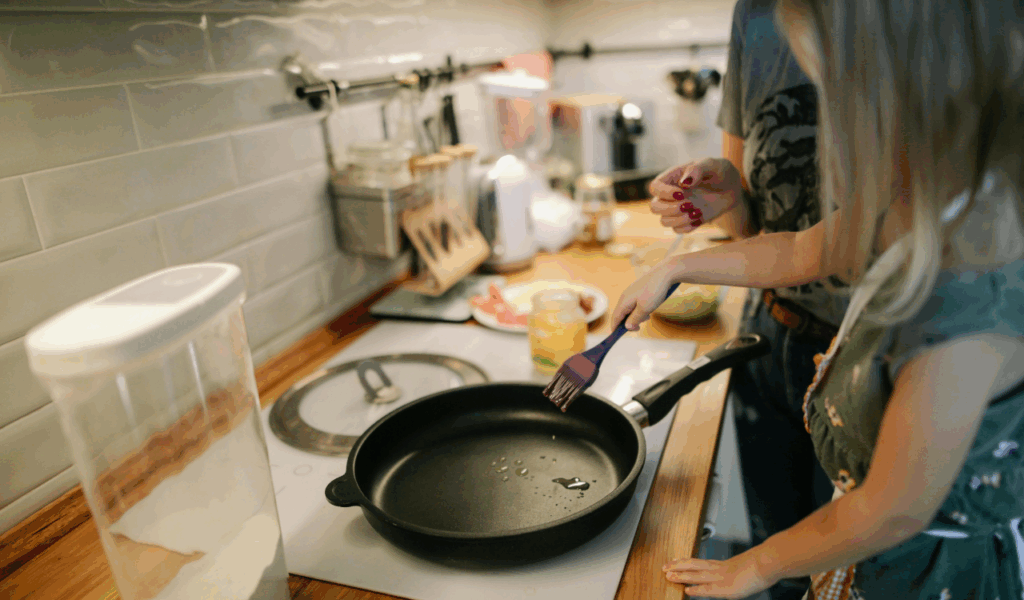How the Microwave Revolution Changed Home Life Forever

Nowadays, it’s difficult to picture a kitchen without the beep and hum of a microwave. However, most homes did not have that gleaming box of convenience just a few generations ago. The development of the microwave from a novelty to a necessity altered not only how we cook but also how we live, eat, and even perceive the concept of home. Let’s look back at that revolution and see what it still means today.
From Radar to Reheat: The Microwave’s Strange Origins

When invention meets serendipity
When standing close to operational radar equipment in 1945, engineer Percy Spencer noticed that a chocolate bar in his pocket melted. He was curious, so he tried heating eggs and popcorn in the microwave. The first microwave ovens sold commercially under the Raytheon brand were the result of that strange experiment.
However, those early units were enormous, costly, and primarily found in industrial kitchens, factories, or restaurants.
Shrink, simplify, saturate
Manufacturers lowered prices over time, reduced component sizes, and implemented controls that were easier to use. Low-cost countertop models flooded the market in the late 1970s, marking the real breakthrough.
Approximately 10% of American homes owned a microwave by 1970. Unit sales surpassed those of gas stoves in just five years. Over 90% of American households owned a microwave by 1997, and one in four homes had one by 1986.
It’s a complete overhaul of household life, not just a fad.
Microwaves in Numbers: How Ubiquitous Are They?

- Approximately 90% of homes in the United States currently own a microwave.
- By 2027, the microwave market is expected to reach a value of USD 10.89 billion worldwide.
- While countertop models held a 75% share in certain markets in 2024, built-in microwaves accounted for 69% of all purchases.
- With a compound annual growth rate of 19.5% in many markets, the Asia-Pacific region is predicted to lead growth.
The microwave is more than just a kitchen appliance, as these figures make clear. It is now ingrained in our daily routines, expectations, and habits, making it a fixture of modern life.
Cooking Culture Shift: What Changed in Homes

Speed becomes king
Prior to microwaves, reheating required stoves, hot plates, or fire and frequently required patience, focus, and attention to detail. “Set and forget” cooking was what the microwave promised. And people welcomed it, particularly for quick meals, instant warming, and leftovers.
New meal rhythms
All of a sudden, the midday leftovers didn’t require a thorough preparation. Microwave-compatible packaging made many of these products possible, including steamable bags, frozen entrees, and ready-to-eat meals. The focus of meal planning has shifted to speed and convenience.
Kitchen layout, redefined
The invention of the microwave gave rise to a new design lingo. It was no longer about a stove surrounded by four walls. The “microwave zone”-built-in cabinetry slots, over-the-range models, or designated shelves-became standard. The microwave is integrated rather than merely perched in many contemporary designs.
Rethinking energy & efficiency
For the simple reason that they cook faster and more directly, microwaves typically consume less energy than traditional ovens. For many daily tasks, short bursts of high power are preferable to long hours of radiant heat.
The Broader Impacts: Health, Waste, and Expectations

Nutrition trade-offs
Convenience food benefits from faster meals. Ready-meals and microwaveable frozen dinners frequently contain higher levels of sodium or preservatives, according to some nutritionists. The microwave is a two-edged tool, though, because it can also be used to quickly steam vegetables or reheat food that has been prepared at home.
Food waste reduction
Food waste is decreased by owning a microwave because leftovers are more likely to be consumed if reheating them doesn’t require turning around. The ease of reuse makes the “waste fridge” less intimidating.
Consumer expectation escalation
The microwave changed the rules about how long food should cook, eliminating the need to go to the stove and watch over it. As a result, expectations increased: meals should be prepared quickly, with consistent heating, and with instantaneous processing. These days, pressure cookers, air fryers, and instant-cook devices are all influenced by this.
Into the Future: What’s Next for the Microwave?

Smarter microwaves
Some devices already have remote control capabilities, connect to smartphone apps, or automatically adjust settings. Voice-activated microwave commands, inventory management, and predictive heating are all part of the “smart kitchen” vision.
Multifunction convergence
Microwaves are now more than just warmers thanks to convection, grilling, air-frying, and sensor cooking. These days, a lot of units are designed to take the place of ovens or grills in small homes.
Penetration in developing markets
Although microwave adoption has historically lagged in countries like India (only about 5% of households owned one in 2013), things are starting to change. More households are adopting microwaves as a result of time constraints, urban density, and rising incomes. Anticipate faster growth, particularly in Latin America and Asia.
Designing for minimal homes
The microwave is integrated into the built environment in micro-apartments, tiny kitchens, and smart homes through hidden slots, foldable doors, and multipurpose space. It is now an architectural choice rather than a large add-on.
Why It Matters for You Today

- Time economy: The microwave saves minutes and occasionally even sanity in hectic lives.
- Meal flexibility: It enables you to change up your diet without deep cooking, repurpose leftovers, and defrost food wisely.
- Design choices: The location of the microwave alters the flow and appearance of your kitchen when remodeling or building.
- Health & Awareness: It’s wise to strike a balance between convenience and nutrition in order to avoid falling victim to the “just microwave it” trap.
- Future proofing: Investing in smart or multipurpose appliances now may pay off in the future.
The microwave revolution subtly changed home life from its unintentional beginning to its position as a mainstay of contemporary kitchens. It keeps whispering the same promise: food, fast, whether it is being used as a reheater, cook, or time-saver.
References
- “Microwave Statistics by Revenue, Regional and Facts (2025).” Sci-Tech Today. https://www.sci-tech-today.com/stats/microwave-statistics/ Sci-Tech Today
- “Microwave Oven Statistics 2025 By Best Cooking Methods.” News.Market.us. https://www.news.market.us/microwave-oven-statistics/ Market.us News
- “Microwave oven.” Wikipedia. https://en.wikipedia.org/wiki/Microwave_oven Wikipedia
- “Impact on American Society –The Microwave.” History of Tech. https://historyoftech.mcclurken.org/microwave/the-impact/





